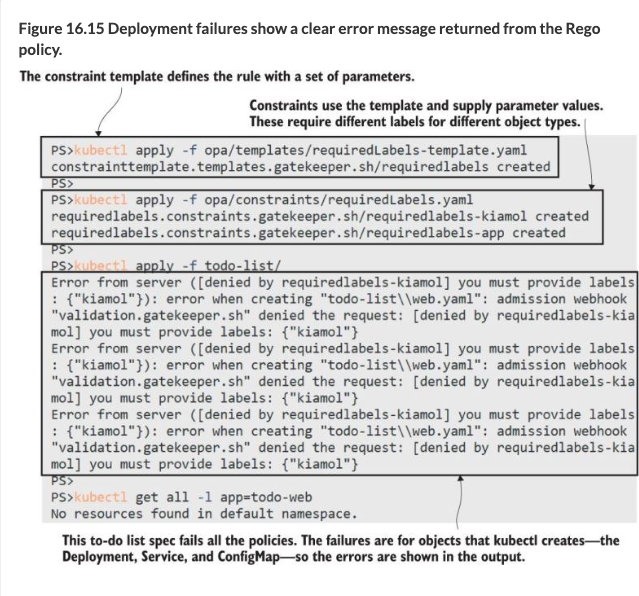Webhooks
ML people should don’t need to worry about creating their own webhooks. It is just useful to know what they are, since some of the terms/concepts can show up in error messages.
Webhooks provide a way for you to validate if a K8s cluster should run an object. Some of these are built in – like the ResourceQuota, which stops workloads from running if they exceed quotas. Webhooks that block workloads are called ValidatingAdmissionWebhook.
There is also the MutatingAdmissionWebhook which can modify objects before they are created. This is useful for things like injecting sidecars into pods or adding labels to objects. It’s hard to tell if a resource has been mutated as there is no indication when you run kubectl describe. This is one very undesirable feature of webhooks, as they are hard to debug and are not visible. There is something called an Open Policy Agent (OPA) that can be used to mitigate these issues. Example of confusion caused by a Mutating webhook:

Webhooks can be expressed in arbitrary code like python or javascript. These can run inside or outside the cluster but must be served on HTTPS.
You have to document the rules of webhooks outside the cluster, as their rules are not discoverable by kubectl.
Webhooks are used to enforce rules like:
- All pods must have container probes defined
- Pods can only run containers from a specific list of repositories
- All containers must have CPU & Memory limits set
- …etc
Webhook Errors
This is what webhook error messages might look like when you encounter them:
